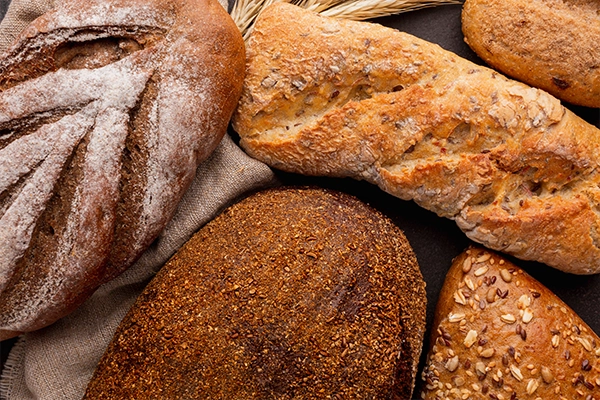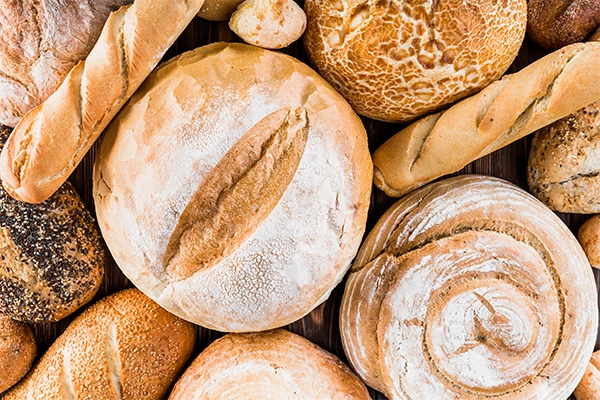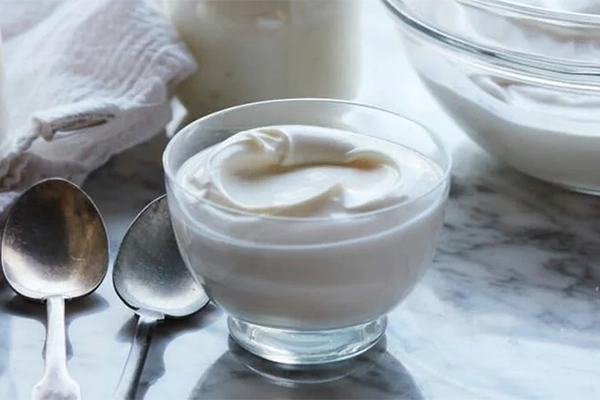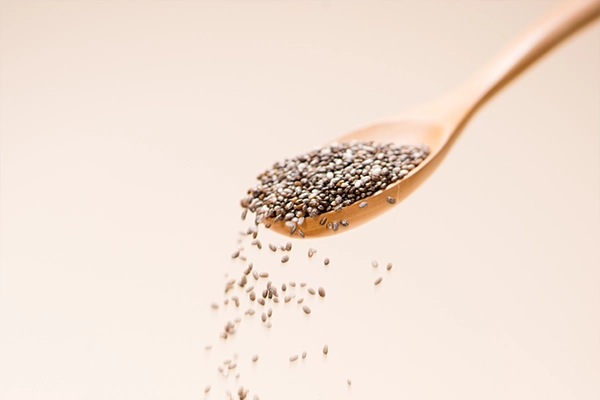Bread is one of the oldest and most essential human foods, with a history that dates back thousands of years to the Stone Age. The fresh bread benefits are significant as this food has held a prominent position as a primary source of energy and nutrients in human diets throughout history. Initially, bread was made in simple and basic forms, with people preparing and consuming it by hand in their homes or in small communities. However, as time passed and technology advanced, the fresh bread benefits gained more attention, and bread production evolved into one of the most important and thriving food industries.
In the past, people had to bake bread at home or wait in long lines at bakeries to meet their bread needs. Today, with the variety of breads available in chain stores and online platforms, obtaining fresh bread has become easier for everyone, and the fresh bread benefits have become more accessible due to quicker access.
What is Bread and How is it Made?
Bread is generally made from a combination of flour and water, along with a substance known as yeast. This dough is rested and fermented before being baked in an oven or a traditional tandoor. The fresh bread benefits reach their peak due to the retention of moisture and the natural aroma and flavor. In the baking process, ingredients such as salt, milk, oil, spices, and nutritious additives are also incorporated alongside grain flours like wheat.

Benefits of Fresh Bread and Its Nutritional Components
Fresh bread is rich in nutrients and energy, and daily consumption can fulfill a significant portion of the body’s needs. Below, we delve into the essential beneficial and necessary components present in bread and explore the fresh bread benefits for overall health:
1. Fiber
One of the primary components found in bread is fiber, which enhances the fresh bread benefits for digestive health. Fiber can help prevent issues like constipation, bowel obstruction, and gastrointestinal infections. Whole wheat bread contains insoluble fiber, while rye bread contains soluble fiber; both types play crucial roles in lowering cholesterol and strengthening intestinal muscles. The fiber-rich fresh bread benefits include preventing hemorrhoids and maintaining gastric tissue health.
2. Protein
Bread is a rich source of protein that can fulfill a significant part of daily bodily requirements. The protein found in bread, especially in whole grain varieties, is highly valuable and aids in the growth and repair of body cells and tissues. Another fresh bread benefit in this context is its support for tissue health and repair. Regular consumption of protein-rich bread can contribute to muscle development and overall physical well-being.
3. Fat
The fat content in bread, particularly in those made from rye flour, enhances the fresh bread benefits by reducing bad cholesterol, controlling blood sugar, and lowering blood pressure. The healthy fats in wheat grains and the bran found in bread contribute to heart health, while the vitamin E present in bread is beneficial for skin health and reducing inflammation. The presence of healthy fats helps maintain a balanced diet and supports various bodily functions.
4. Carbohydrates
Bread is one of the primary sources of carbohydrates. While excessive carbohydrate consumption can lead to spikes in blood sugar, the combination of fiber with carbohydrates in bread slows down absorption, preventing sudden blood sugar increases. The fresh bread benefits include providing energy to the body and stabilizing blood sugar levels. This is especially important for individuals with diabetes or those trying to maintain healthy blood sugar levels.
5. Vitamins
Fresh bread is rich in B vitamins such as thiamine, niacin, riboflavin, and vitamin E, which are essential for muscle strengthening, focus improvement, and reducing muscle pain. The fresh bread benefits in providing these crucial vitamins make it a key component of a healthy diet. Additionally, the vitality and liveliness of the body derive from the presence of these vitamins. Regular consumption of fresh bread contributes to improved energy levels and enhanced physical performance.
6. Minerals
Fresh bread contains minerals such as iron, calcium, zinc, magnesium, and potassium, each playing a unique role in maintaining health. The fresh bread benefits include preventing anemia by providing iron and strengthening bones with calcium. Zinc and magnesium found in bread are also vital for overall health and bone formation. Incorporating fresh bread into the diet can help meet daily mineral requirements and support overall health.
7. Micronutrients
Fresh bread also contains micronutrients such as gluten, folic acid, and silica, all of which contribute to strengthening the body’s structure. The presence of these micronutrients is part of the fresh bread benefits and is very useful for dental health, bone health, and improving the function of red blood cells. These nutrients play a vital role in overall bodily functions and contribute to the maintenance of a healthy lifestyle.
Fresh Bread: Calories and Importance in Diet
For many individuals looking to manage their weight or maintain their health, understanding fresh bread calories is crucial. Bread is one of the most important and widely consumed foods in many cultures, and choosing the right type can help control caloric intake. The calorie content of bread varies depending on the type and the amount of bran it contains.
Generally, a piece of bread the size of a palm (not including the fingers) weighs around 20 to 30 grams. The calories in fresh bread also depend on its type; thicker and whole grain breads usually have a higher weight and caloric content, while thinner and lighter varieties, such as lavash or traditional bread, have fewer calories.
For comparison, every 100 grams of white bread typically contains about 260 calories and can quickly provide the energy required for daily activities. In contrast, whole grain or rye breads often have lower calories and, due to their high fiber content, promote a greater sense of fullness while better controlling blood sugar levels. Thus, the calories in fresh whole grain bread are generally slightly lower than those of white bread, making it a better choice for healthier diets due to its higher nutritional value.
Awareness of fresh bread calories and moderate consumption can help individuals manage their daily energy intake more effectively and make healthier choices for weight control and maintaining fitness.

Shelf Life of Fresh Bread
Fresh bread typically lasts about 2 to 3 days at room temperature, after which it may dry out and lose its original quality and flavor. To preserve freshness and extend the shelf life of fresh bread, choosing the right storage method is vital. One of the best ways to achieve this is by using a cloth bag or a cotton towel. These bags facilitate air circulation and prevent rapid moisture loss, allowing the bread to remain soft and flavorful for a longer period.
If you intend to keep fresh bread for an extended period, freezing is the best option. For this purpose, first, cut the bread into desired portions and pack them in freezer-safe bags or airtight containers. This not only preserves freshness but also prevents the bread from absorbing various odors. Properly packaged frozen bread can maintain its freshness and flavor for several weeks, and when ready to consume, you can take it directly from the freezer and warm it gently.
By following these tips, the shelf life of fresh bread can be easily extended, allowing you to always have high-quality and tasty bread on hand without the need for daily purchases.
Summary
If you are in search of fresh and quality bread, there are various places to buy it. Where to buy fresh bread? Nowadays, chain stores and hypermarkets, such as Hypermarket Faraz, perform well in providing fresh and high-quality bread. These stores offer a wide variety of breads daily, including traditional, whole grain, dietary, and even types suitable for people with dietary restrictions.
One of the advantages of shopping at large hypermarkets like Faraz Hypermarket is access to breads made from the best bakeries, ensuring quality control and freshness, providing a reliable and satisfying experience for customers. These hypermarkets usually sell bread in suitable packaging, which helps increase the bread’s shelf life and preserve its taste and aroma. Additionally, Hypermarket Faraz offers various low-calorie and high-fiber bread options, making it suitable for individuals who prioritize their diets.
So if you’re still wondering where to buy fresh bread, Hypermarket Faraz with its variety of fresh and diverse options is one of the best answers to this need. Here you can obtain your desired bread with confidence in its high quality, shelf life, and delightful taste, enjoying the pleasure of consuming fresh bread.









